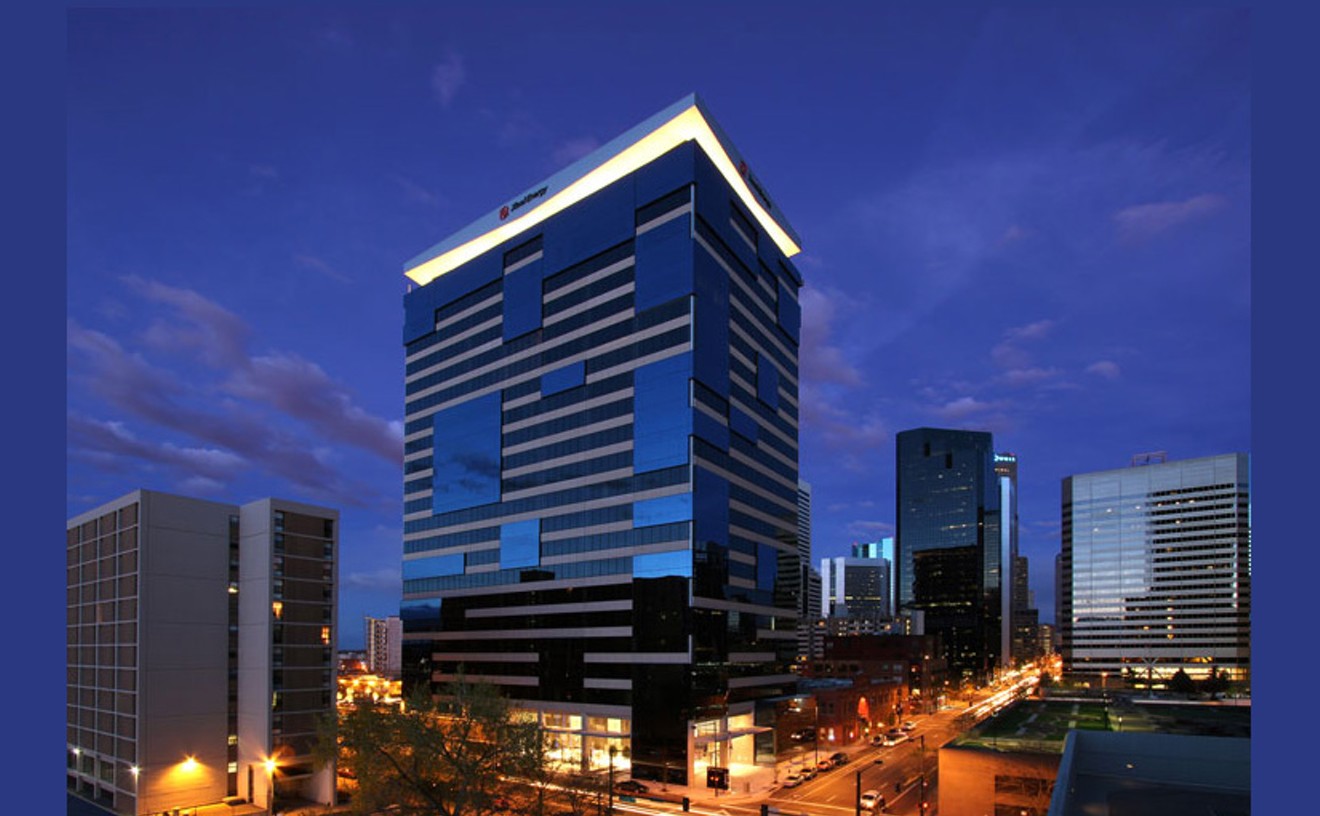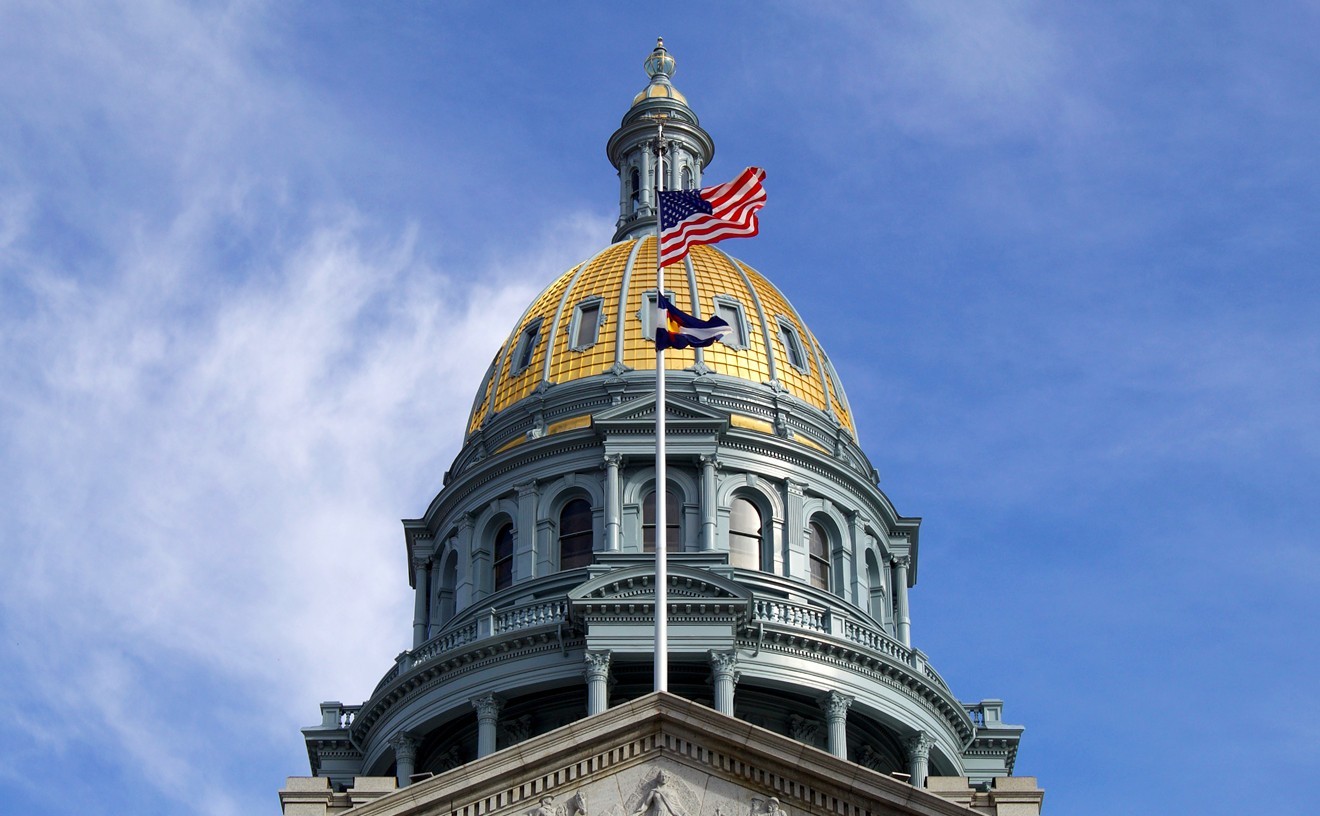The last time Chad Laughlin saw his buddy Dylan Klebold, the two almost smashed into each other in the parking lot of Columbine High School. Laughlin was driving his Mistubishi Galant, headed off-campus with a friend for lunch. Klebold, wearing his black duster, was barreling into the lot in his Beemer. Laughlin flipped him off, by way of a good-natured greeting, then tore out of there.
It was 11:15 a.m. on April 20, 1999. The shooting and screaming began three minutes later.
Laughlin found out that something was wrong at Columbine when his mother paged him at his friend's house. Like most of the country, he watched the horror unfold on television that afternoon.
With the tenth anniversary of the attack on Columbine looming, former students and teachers, the wounded and the families of the dead, are all bracing for the expected media blitz and an onslaught of traumatic memories. But Laughlin, now 27, may have more mixed emotions about the event than most. As one of a small circle of insiders who considered Eric Harris and Dylan Klebold to be their good friends before April 20, he's thought about that day a great deal in the last few years.
"I was pretty much in denial, emotionally, for six or seven years," he says. "I knew Dylan and Eric better than most people -- particularly Dylan. And that weighs heavily, obviously."
Laughlin and Klebold were close friends in elementary school; they were both in the Challenging High Intellectual Potential Students (CHIPS) program for "gifted" children. "We were just a bunch of intellectual, dorky kids," Laughlin recalls. "We memorized the state capitals and played a lot of chess."
Klebold was a quiet, somewhat awkward kid -- but not nearly as strange as he would become a few years later. Laughlin went to private school for three years; when he became reaquainted with Klebold in their sophomore year at Columbine, he found him much more reserved, with an increasingly darker outlook on life. Although the pair gravitated toward the same social circles -- at one point Laughlin and Eric Harris worked together in a fast-food joint at the mall -- their primary interaction outside of school became the fantasy baseball league Laughlin had set up online.
By junior year, Laughlin could see the bond between Klebold and Harris tightening, to the exclusion of everyone else. The two often sat by themselves in the Columbine lunchroom, known as "the commons." They were by no means outcasts. "They were well-liked by a fair amount of people," Laughlin says. At the same time, he believes the social stratification -- and yes, bullying -- found at Columbine played a real part in their isolation.
"A lot of the tension in the school came from the class above us," Laughlin insists. "There were people fearful of walking by a table where you knew you didn't belong, stuff like that. Certain groups certainly got preferential treatment across the board. I caught the tail end of one really horrible incident, and I know Dylan told his mother that it was the worst day of his life."
That incident, according to Laughlin, involved seniors pelting Klebold with "ketchup-covered tampons" in the commons. (For another version of the incident, which Klebold may have been referencing when he wrote in Harris' yearbook of taking "our revenge in the commons," see my 2000 story, "The Missing Motive.")
Yet Laughlin is wary of the search for simple, overriding causes for the killers' pathology. He's skeptical of self-appointed authorities on Columbine; the way the media appropriated the tragedy and spun its own elaborate myths about the school and its subcultures; and the recent books that claim to explain what really happened. "I'm not a fan of the stuff coming out that's considered definitive when they're not even talking to the people who knew these guys," he says.
Certain speculations in Columbine, Salon writer Dave Cullen's widely praised account, are particularly irksome to Laughlin. He disputes Cullen's portrayal of the killers as not athletic ("Eric was a good soccer player and Dylan was a great pitcher") and scoffs at the notion that Harris was some kind of chick magnet, an assertion based largely on the account of one reputed girlfriend who investigators found to have credibility problems. Laughlin introduced Harris to one girl he dated for a year but never got serious with; he suspects both killers died as virgins.
Laughlin gave few interviews after the massacre. He "numbed himself" with partying in college and tried not to think about his own unwitting role in what happened -- for example, going to Wyoming to buy fireworks for Klebold and Harris when they were grounded for a 1998 arrest, stuff they would later use to make small bombs. He played poker professionally for a while but eventually found himself going back to school (he's now studying Chinese medicine, seeking a doctorate in California) and reading a lot more -- researching, among other things, the how and why of Columbine. He has come to see his friend Klebold as not a mere follower but a much more disturbed, angrier person than he ever suspected.
"They were both equally responsible," he says. "But if there was one who wanted to back out at the end, it was Dylan."
Laughlin says he went through "a grief cycle" about the tragedy, but is emerging with a new perspective. Wounded student Mark Taylor wrote a book about forgiving the killers; that notion was incomprehensible to Laughlin a few years ago, but he now considers it a vital step in his own journey. (For more on Taylor, see my 2007 story, "The Good Part;" for more on other Columbine survivors, see our Columbine Reader.)
"I could talk and talk, and nobody will know exactly how I felt," he says. "Like maybe I could have done something. If I wasn't so obsessed with my own life, with chasing girls around -- all of us who knew them know that we could have done something. But at the same time, we have to forgive ourselves for what we didn't do. And we have to forgive them. That's what I've come to realize in the last year or two."
Laughlin is coming home for the memorial services this weekend. He wants to find ways to help others come to terms with the legacy of Columbine and to heal. And he wants to come to a better understanding, through his own research and writing, of the boy he once thought he knew as well as himself -- but who harbored a secret rage that would spread anguish and grief over decades.











